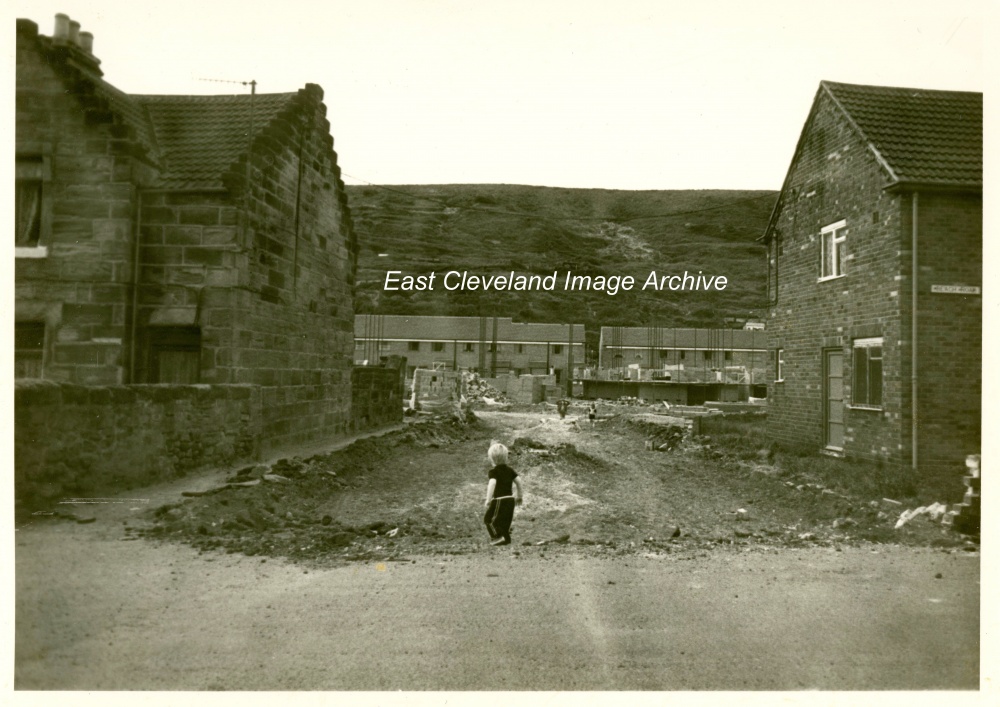
Our view shows a post-demolition, pre-build view of Chapel Street from the Stone Row / Beach Road junction. How different it looks today. Our question is who is the small child?
Image courtesy of The Pem Holiday Collection.
|
|
||
 Our view shows a post-demolition, pre-build view of Chapel Street from the Stone Row / Beach Road junction. How different it looks today. Our question is who is the small child? Image courtesy of The Pem Holiday Collection. 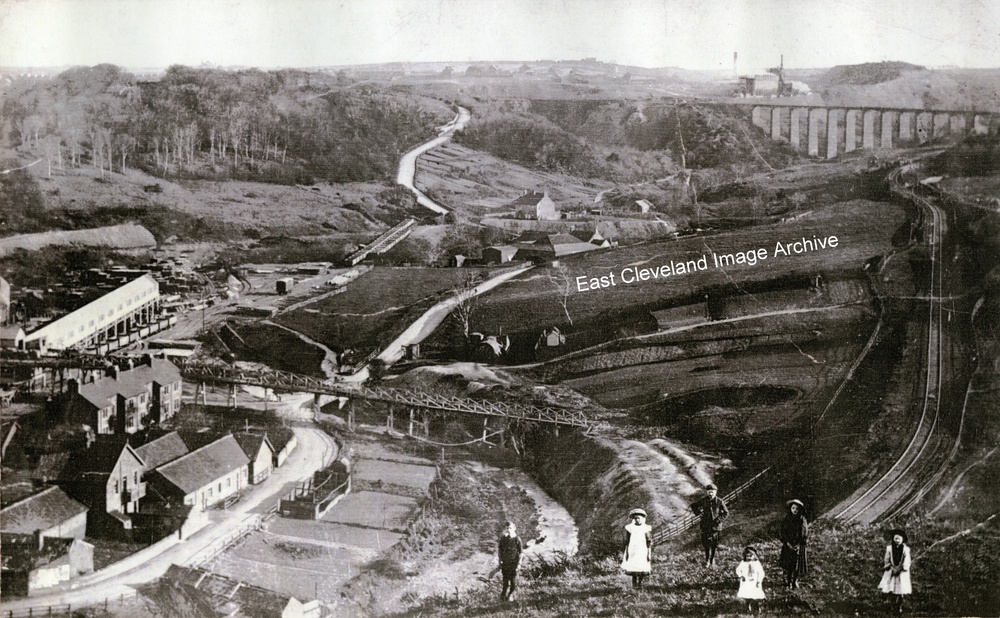 A panorama of Skinningrove valley. The mine is on the left, with Overmen’s cottages next to the trestle bridge which crosses the beck to the drift into the bottom of Loftus North mine, the shaft used to hoist ironstone to the works. On the left the white enclosure of the newly built picking belt (1907), for cleaning the ironstone can be seen. Towards Mill bank, the mine rail sidings cross the beck this was originally extended to the old Whitecliffe mine. Kilton Viaduct is yet to be filled in, with Liverton mine above it. and the rail zig zag skirts the right hand side down the valley. Image courtesy of Jean Carass. 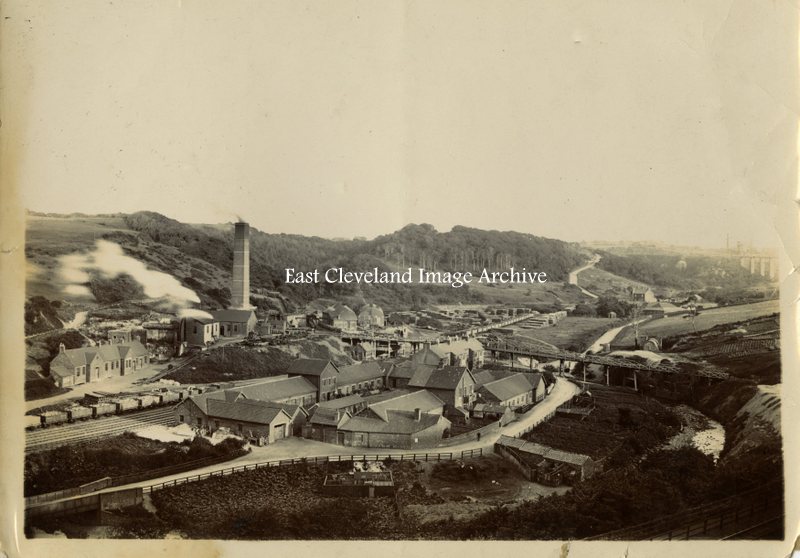 An interesting photograph of the mine predating the installation of the picking belt (1907). the boiler chimney and steam from the Fan engine are clearly seen, The extensive stables complex for the mine horses (not ponys), dominates the centre of the photo. In the rail sidings a rake of wagons are loaded with ironstone. And towards mill bank is the stockyard stacked with timber for pit props. On The eastern side of the valley behind the mine is seen Deepdale wood, this slowly disappeared under a mountain of shale in later years. Mary Hodges requests: “I am told my granddad John William Thomas was a road cleaner in the mine. he married Margaret Tansey and they had 3 children – Henry, Mary and Lilian (possibly a 4th Sheila although she may have been a cousin?). If anyone can shed any light, I would be most grateful!” Image courtesy of Olive Bennett; thanks to Mary Dodges for the enquiry. 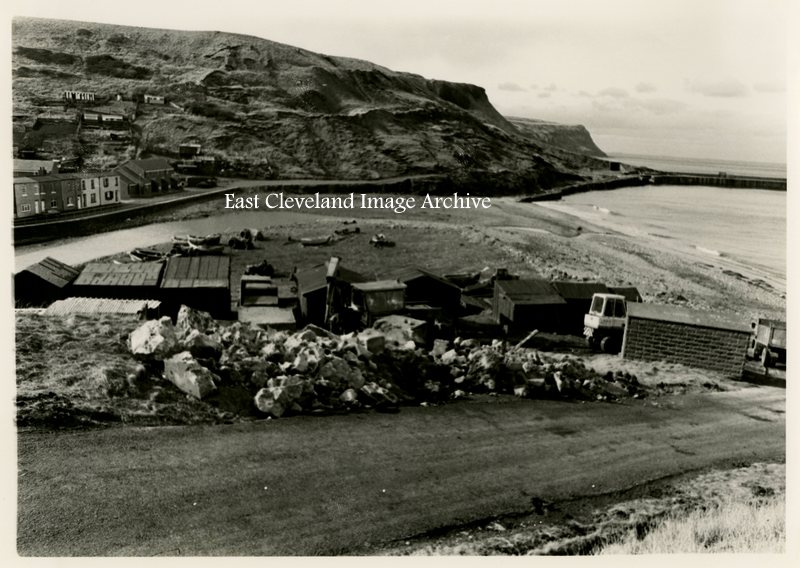 Do you remember the large blocks above Skinningrove Beach? We have a collection of images of the work taking place; this is the first. We have no dates for this work can anybody assist? Colin Hart suggests: “The blocks must have been removed between 1977 and 1981 as one of the blocks reads MUFC FA Cup 1977 and part of Marine Terrace which was demolished in 1981 is in the photograph.” Image courtesy of the Pem Holliday Collection, thanks to Colin Hart for the update.  Splitting the blocks must have been a job! We wondered when the blocks were removed and Colin now advises us: ”The blocks must have been removed between 1977 and 1981 as one of the blocks reads MUFC (Manchester United Football Club) FA Cup 1977 .” Colin also tell us: ” These blocks were a great challenge for all us ”’grovers”; there was about 20 of them each had about a six foot gap between them and it was a great achievement when you could start at the top and jump from block to block all the way to the bottom.” 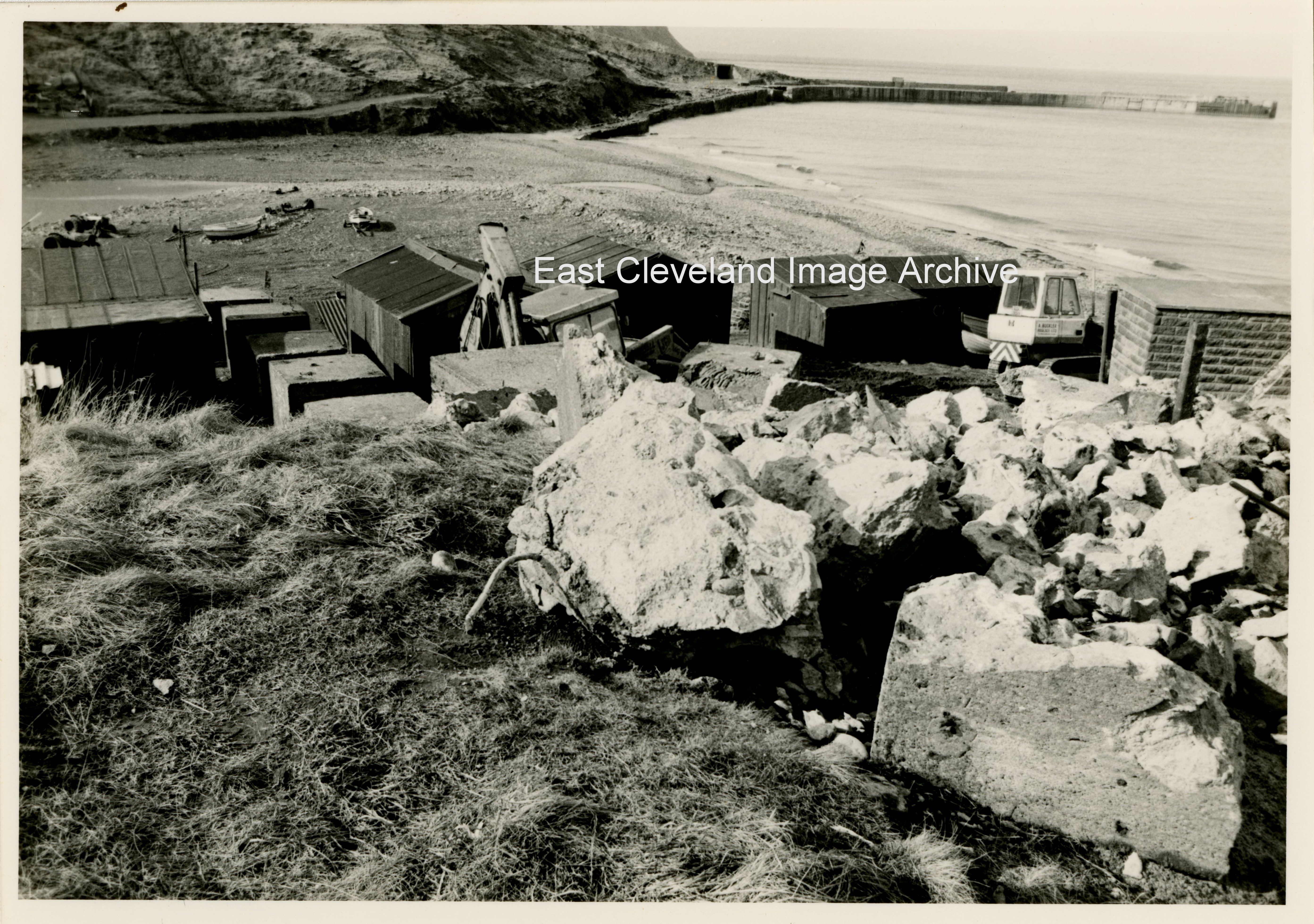 How easy it would be to get even the very mobile digger jammed, no wonder they could stop tanks. Image courtesy of the Pem Holliday Collection. 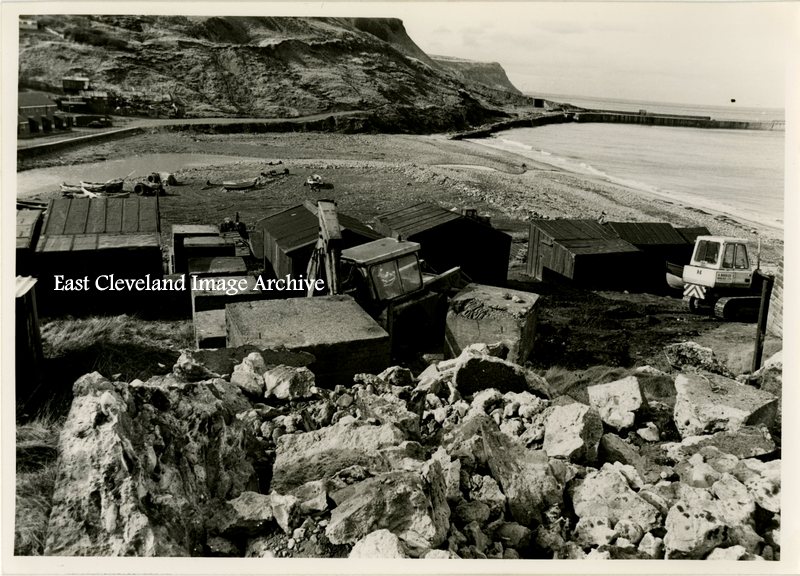 This image shows how the blocks would have impeded all but foot traffic. Image courtesy of the Pem Holliday Collection. 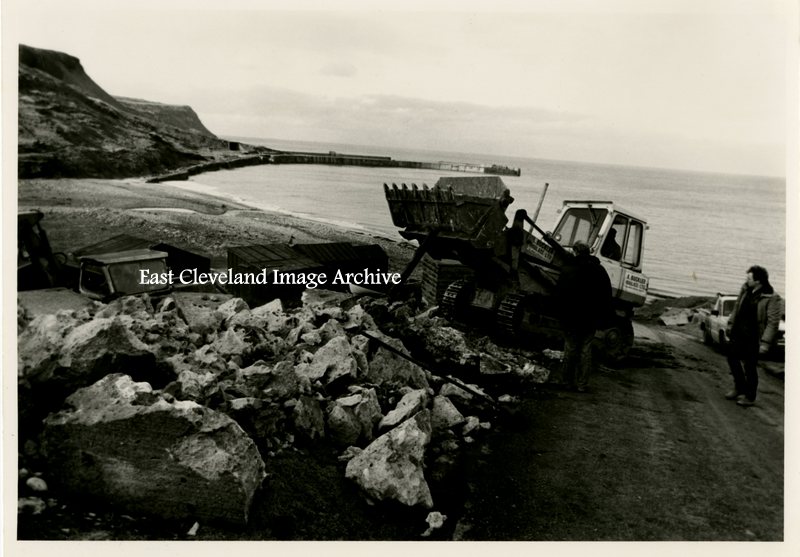 The final stages with the mounds of rubble being piled up prior to removal. Image courtesy of the Pem Holliday Collection. 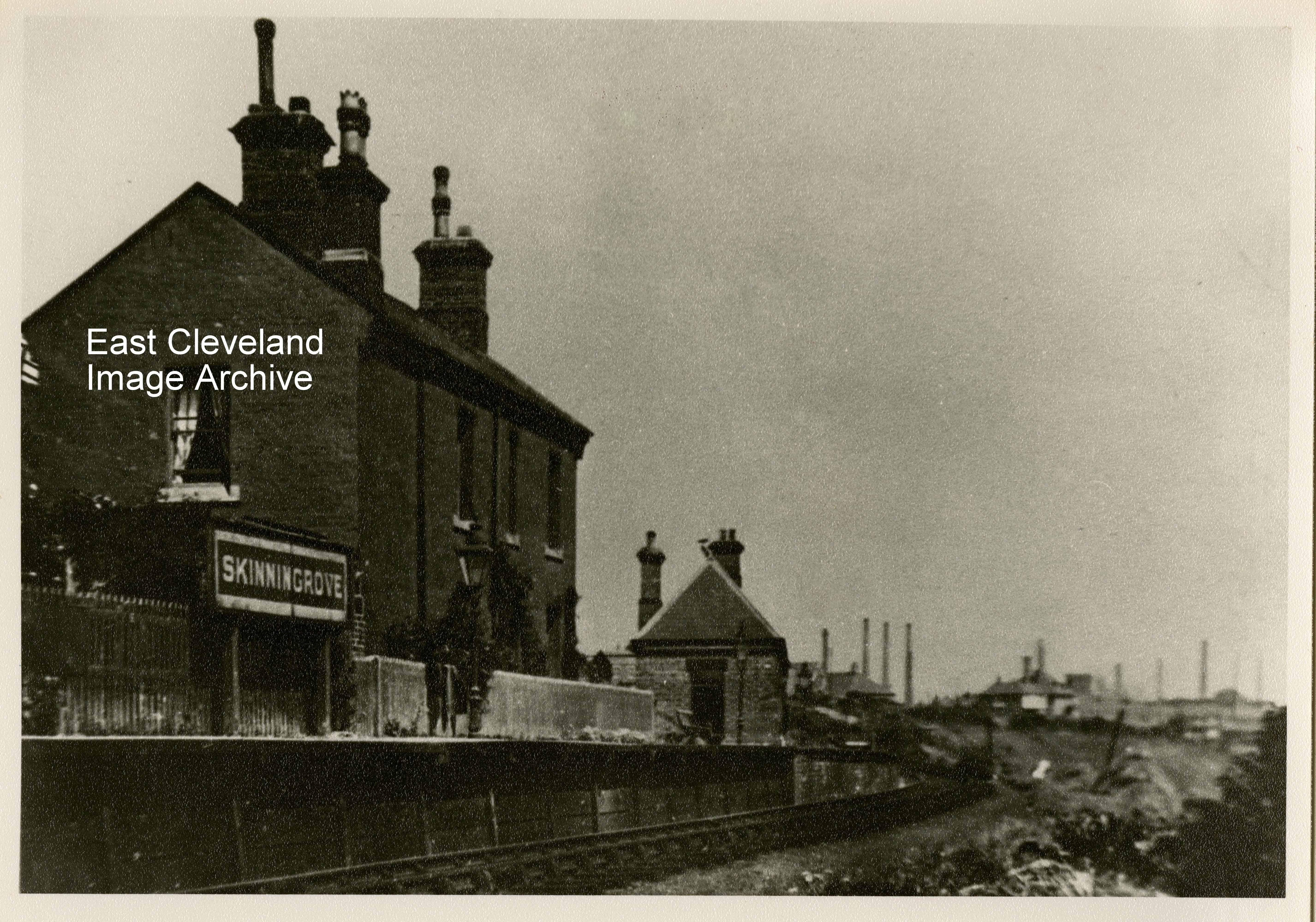 Skinningrove Station when it was a working station, it was closer to Carlin How, separated by the famous zig zag rail descent into Skinningrove village. A one platform station, it suffered badly from mining subsidence and had to be demolished, nothing remains of this station now except a locked gate and some footings. The photographer is standing on the Loftus side looking towards Skinningrove Iron and Steel Works; perhaps that is the real reason for the re-naming of the station! This view gives a proper idea of how close to Carlin How and how far away from Skinningrove. In the background right can be seen the chimneys of the steel works. Image courtesy of the Pem Holliday Collection, George Pearson and other sources. 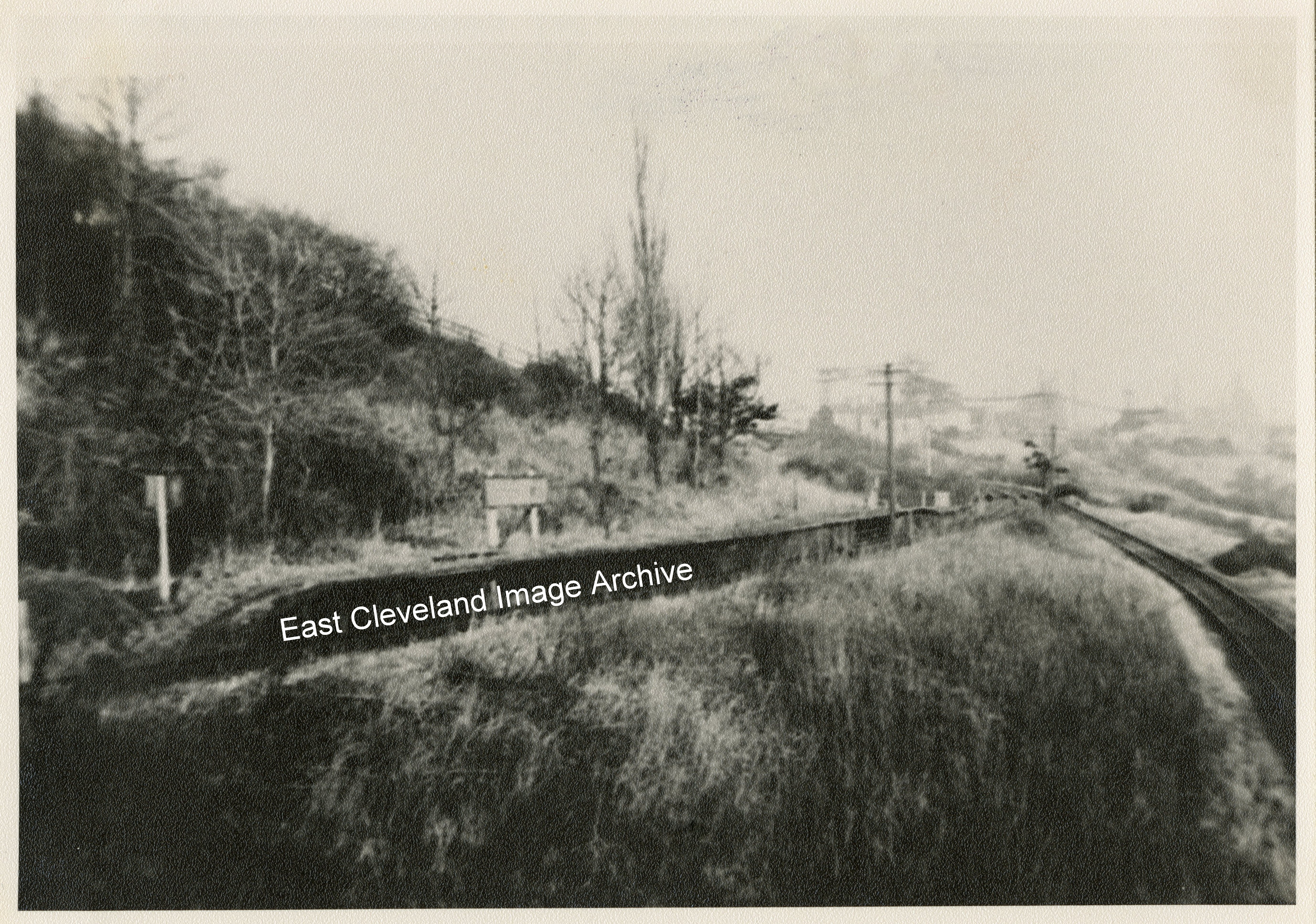 Skinningrove Station and the buildings gone; only the platform and sign remain to indicate where it stood. |
||
Recent Comments